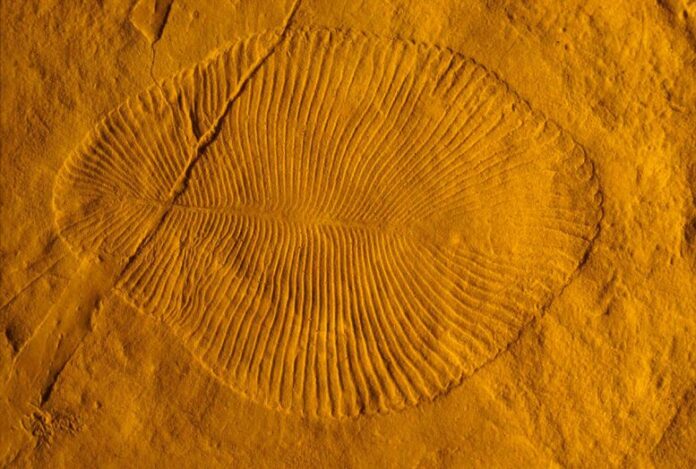Is it possible that life on Earth began because of changes in the planet’s magnetic field? Or that the proliferation of multicellular life on Earth owes its existence to fluctuations in that field?
The magnetic field that surrounds our planet is called the magnetosphere. It shields us from the solar and cosmic radiation. It has been the planet’s gatekeeper since the liquid iron core began spinning during the formative development of Earth.
Of all the rocky inner planets in the Solar System, only Earth possesses a powerful magnetosphere. Mars appears to have had one once upon a time. Early in the planet’s history evidence in the rocks shows magnetic signatures indicating a field strength of about one-third of Earth’s. Those rocks coincide with Mars having rivers, lakes and oceans. The Martian magnetosphere, however, appears to have weakened and shut down about 3.9 billion Earth years ago. Could the change in the planet’s magnetic fields have caused it to lose much of its atmosphere and turn into the dry, cold desert it is today?
The other rocky planets of the Inner Solar System include Mercury and Venus. Mercury appears to have had a magnetic field 3.9 billion years ago. This planet has a liquid iron core. So is there more to a strong magnetic field than just the existence of a liquid iron core?
The planet’s spin seems to play a part in supporting a magnetosphere. Mercury has a 3:2 orbital resonance, meaning every time it makes one orbit around the Sun it rotates three times. That low spin rate may explain the lack of a magnetosphere today. Venus also has a molten metal core but its spin rate is even slower than Mercury’s taking 243 days to complete a day while going around the Sun once every 225 days. Venus, too, lacks a magnetosphere.
Magnetospheres, liquid metal cores, and spin rates all play their part in the story of the Solar System’s inner planets. Why is there life on Earth in the present, and possibly Mars in the past, yet no life on Venus?
Life on Earth and Mars may have begun 4.35 billion Earth years ago when both planets spun at faster rates than they do today. Both had robust magnetospheres. Those magnetospheres protected each planet’s surface and likely played a part in the emergence of life. Another consistency that Earth and Mars share is similar geology. Their surfaces at the beginning were largely basaltic glass from active volcanism, minerals like nickel and lots of water. Vast quantities of gasses emerged from volcanoes to form thick atmospheres. The chemistry of both planets with the interactions of atmosphere, water, and surface rocks produced life’s precursors. There is evidence of nucleoside triphosphates, precursors to ribonucleic acid (RNA) and the double-helix deoxyribonucleic acid (DNA).
Life on Mars may have never gone beyond single-cell organisms. Life on Earth remained single-cell for eons of time. Multicellular life seemed to spring out of nowhere. Researchers at the University of Rochester in New York believe that the planet’s magnetic field may provide the answer. They asked, could changes to Earth’s magnetic field during the Ediacaran Period lasting from 635 to 541 million years ago been the stimulus for evolution to go multicellular? Could a change in the magnetic field be responsible for creatures like Dickinsonia seen in the fossil image at the top of this article?
The research done at the University of Rochester has found evidence of ultra-low magnetic field strengths in rocks dating to a period lasting 26 million years that coincide with the rapid oxygenation of the Earth’s atmosphere and oceans. They believe this is more than a coincidence.
In their recently published paper, the researchers point to significant atmospheric hydrogen loss during these millions of years. The cause, they believe points to the reduced magnetic field strength over 26 million years with solar radiation driving free hydrogen out of the atmosphere. Hydrogen paired with oxygen was preserved. The subsequent Cambrian Period saw the magnetosphere return to normal.
John Tarduno, in the Department of Earth and Environmental Sciences at Rochester, notes that the weakening field may be the reason advanced life appeared, but its existence would have been shortlived if the magnetic field hadn’t strengthened.
He states, “If the extraordinarily weak field had remained after the Ediacaran, Earth might look very different from the water-rich planet it is today.” Hydrogen loss would have eventually led to water loss, drying out the planet until Earth came to resemble the Mars we see today.
Tarduno continues, “It’s fascinating to think that processes in Earth’s core could be linked ultimately to evolution.” He is referring, of course, to our liquid molten core that spins inside the planet to play its part in creating the magnetosphere that protects our atmosphere and all things living on Earth.
















